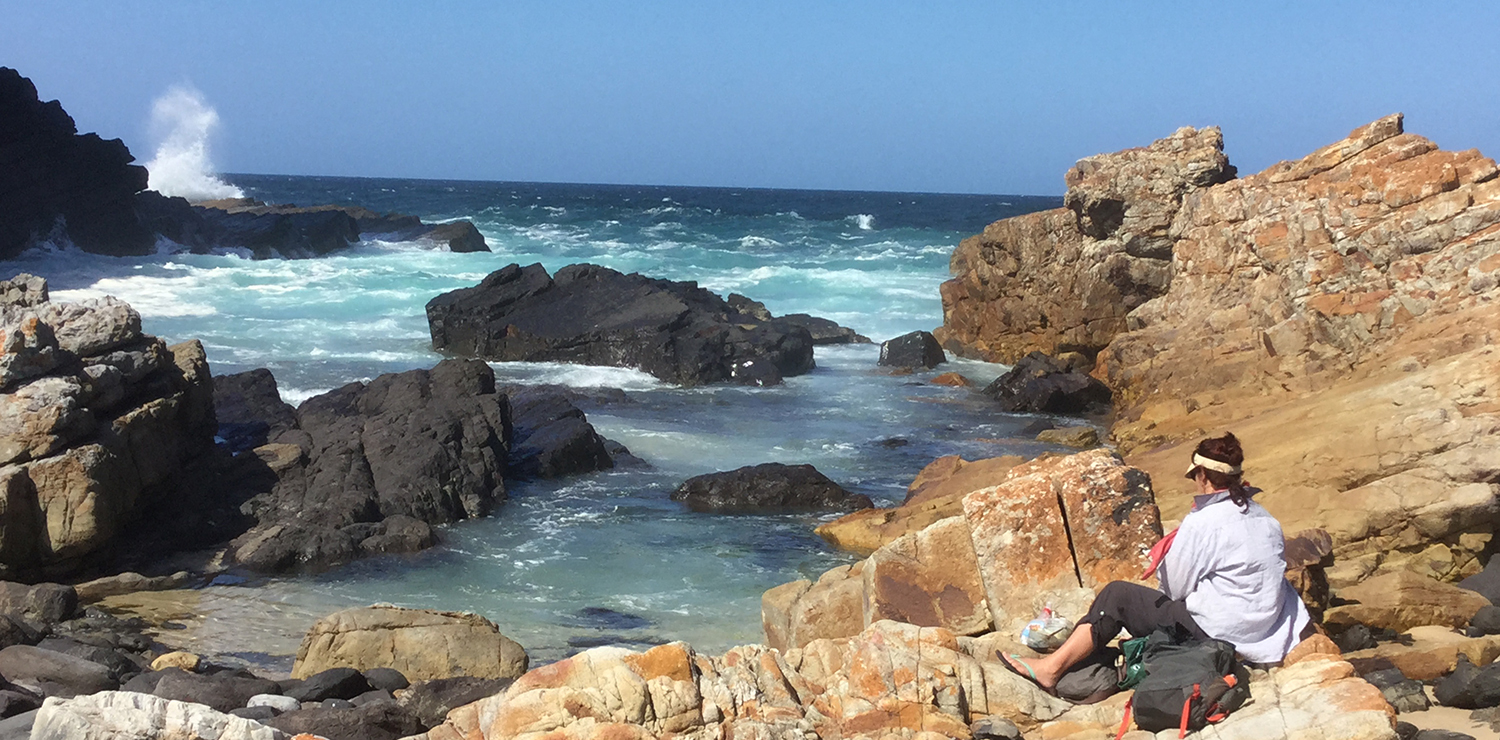
My practice is all about place. I am especially interested in wild places. These might be a dry creek bed, a coastal mangrove swamp, or an open grassy plain.
In his book Landmarks (2015), acclaimed author Robert MacFarlane writes: “The terrain beyond the city fringe has become progressively more understood in terms of large generic units (‘field’, ‘hill’, ‘valley’, ‘wood’). It has become a blandscape. We are blasé about place . . . meaning [we are] indifferent to the distinction between things.”
I am working against this saddening notion. By examining a place, I recreate a connection with place. In turn I counter my own senses of alienation and dislocation with enchantment and belonging.
To study and connect with a new location, I work intensively en plein air. As I arrive, I focus on being present and aware of my surroundings: walking, listening, feeling, surveying, and collecting things along my journey. Once I’ve chosen a locale for working, I start by making marks, loosely feeling the lay of the land with my pencil. I build up the surface of the canvas with layers of mixed media and new marks, shifting seamlessly between painting, scratching and erasing, and incorporating tools and materials found on location, such as twigs, branches, ochres.
As I’m working, I look for the forces that weave a wild place. I canvas the topography, geology and ecology; I notice the movements of wind and water; I observe weather patterns and anthropogenic traces of human activity. I survey both the natural shapes, textures, colours and patterns of the landscape and evidence of human beings. This might appear as fences, paths, signs, clearings, felled trees and scarred trees, or take the more insidious forms of introduced fauna and flora. In even the most remote places, there is always a sign of someone being there before me.
Throughout this creative process, I am aware that the landscape is a keeper of memory; its current shape is the culmination of all that has gone on before.
Then, I return to the studio. Translating my drawings and paintings into large-scale, abstract landscapes, I draw on my memories, knowledge, experiences and understandings of a wild place. The finished works move beyond mimetic reproductions to abstracted, intuitive representations that capture the essence of a place and how I feel when I am there. The finished works embody feelings of enchantment and mindful relaxation.
My work sits within a rich tradition of Australian Landscape paintings. My most admired artists are Elisabeth Cummings, Ian Fairweather, Roy Jackson, Tony Tuckson and Fred Williams. In my work, you might recognise the legacy of their abstract patterns, intuitive marks, and mesmerising colours.
Ultimately, my work combines a new visual language of materiality, surface and spontaneous mark-making with an abiding love for the heart and soul of wild places.
Helena Jackson-Lloyd
